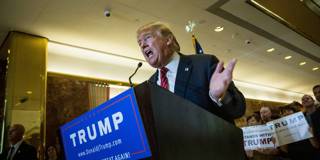
Big Money Beat Bigger Money in the US Election
The vast amount of money poured into the 2024 US presidential election did not have a decisive effect on the outcome: Donald Trump won, despite being significantly outspent by Kamala Harris. But that is not to discount the power of ultra-rich donors, whose increasing influence over the electoral process is a threat to democracy.
BELFAST – Much has been written in recent decades about the growing influence of money on politics and elections in the United States, including titles such as The Best Congress Money Can Buy and The Best Democracy Money Can Buy. But has Donald Trump’s victory over Vice President Kamala Harris, whose campaign had a huge funding advantage, undermined that narrative?